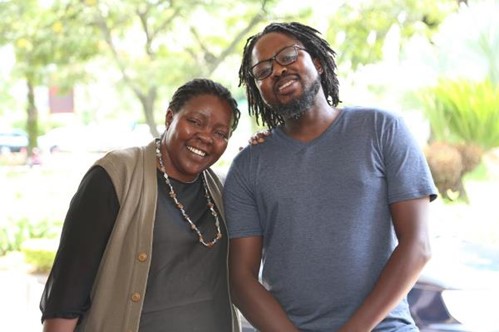Blog
Why Looking Behind the Dominant Narrative Is So Important
By Elizabeth Maloba and Patrick Mpedzisi
An African proverb says: “Until the lion tells his side of the story, the tale of the hunt will always glorify the hunter.” Patrick Mpedzisi opens with this quote, learned from his mother. “This story highlights one of the key tenets of many African judicial systems – to identify and listen to the different narratives before we can attempt to provide a remedy,” he explains, comparing this to the Roman-Dutch legal system he learned as a law student. The question is how and why do we see, analyse and judge not only the present but history as well.
In a conversation with fellow GDL member Elizabeth Maloba, Patrick explores the extent to which events are shaped by a particular, dominant culture. “Historical injustices are complicated because the narrative is often constructed from the perspective of the dominant culture,” says Patrick. The starting point of this exchange was an observation by Elizabeth about the Kariba dam in the Kariba Lake region at the border between Zambia and Zimbabwe, which is often reported from different perspectives depending on whom you ask. Elizabeth says: “The event has been described both as “the worst dam resettlement disaster in African history” and as “[an exemplary case where] everything that a government [could] do on a meagre budget [was] done.”
The Kariba dam in Zimbabwe is indeed a technological advance and the Kariba Lake is a major tourist attraction, reports Patrick. But, he says, the Kariba dam project also led to the exclusion and displacement of the Tonga people who had previously lived there and who never actually received their promised compensation payments. These facts are not unknown, but for many the focus when speaking of the Kariba dam lies on technological progress and tourism.
In the conversation, the two ask themselves why there are such different stories, to what extent dominant narratives are responsible for this, and what can be done to reduce the dominance of certain narratives.
These questions are particularly pertinent when we look into historical injustices, described by Elizabeth as “events where states, for political, economic, religious, or ethnic reasons, abused or allowed the abuse of specific minorities or foreign populations.” She continues: “Many of these events are viewed in retrospect as morally wrong, even if they were not illegal at the time they were committed.” Historical injustices tend to have multiple narratives. But often one is dominant.
“If social transformation is the goal of restorative justice, equity and inclusion are its building blocks,” concludes Elizabeth. They are also vital if we are to see the full picture. She emphasises: “Collectively documenting multiple narratives enables communities to constructively analyse and synthesise pervasive patterns that perpetuate historical injustices in modern life.”
You can read the full article here.
About the authors:
Elizabeth Maloba works in cross-sectoral, trans-professional, multi-stakeholder settings, providing support in problem solving and decision making processes and facilitating learning and the exchange of ideas.
Patrick Mpedzisi is an organizational development consultant working in the NGO sector in Africa with a focus on building NGOs’ capacities to be more effective in their sustainability and resource mobilization.
Published on October 28, 2021.
Photo credit: Robin Filmz
